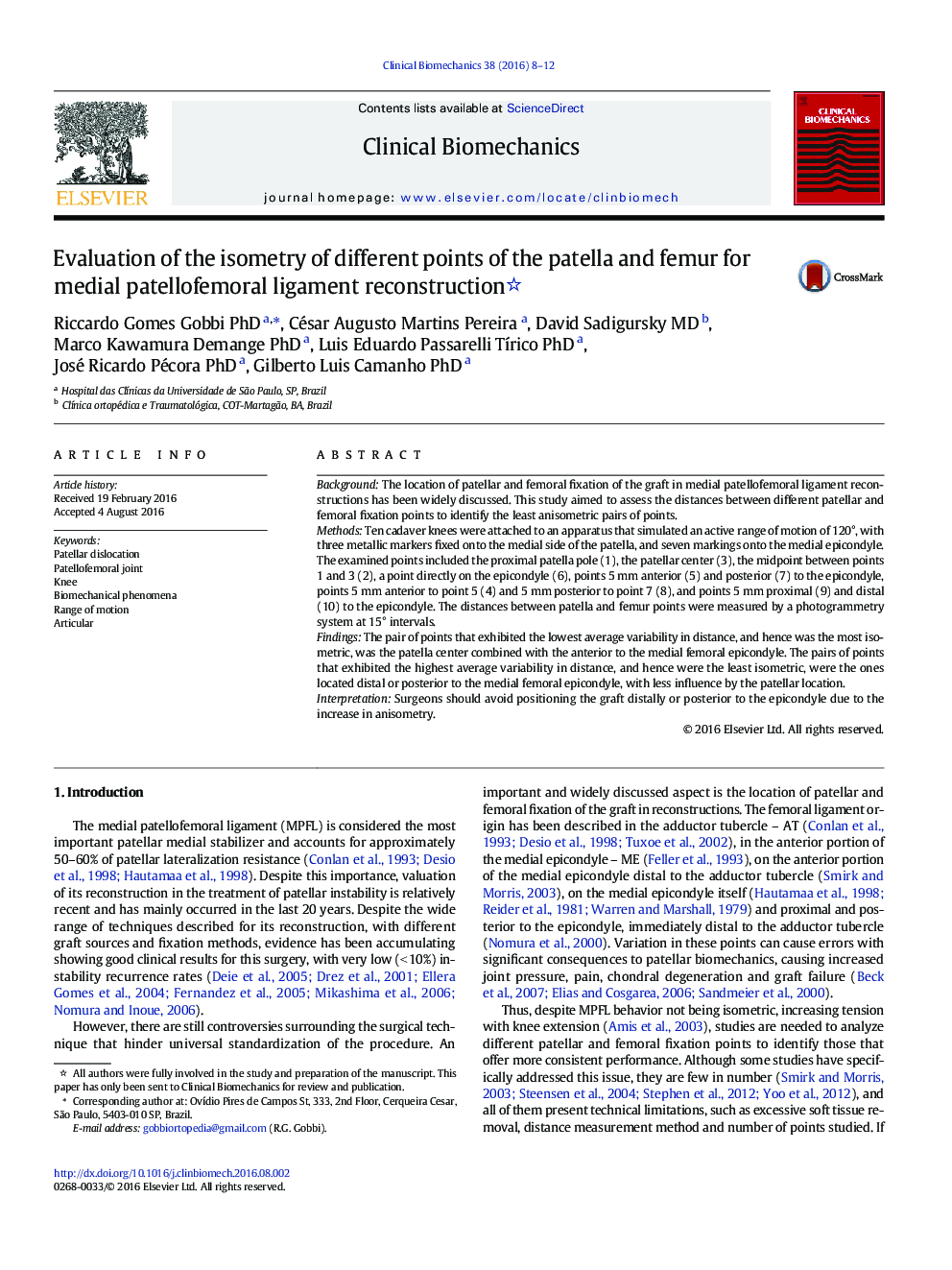| Article ID | Journal | Published Year | Pages | File Type |
|---|---|---|---|---|
| 4050051 | Clinical Biomechanics | 2016 | 5 Pages |
•Patellofemoral graft positioning can cause significant consequences to patellar biomechanics.•Different patellar and femoral fixation points need to be studied.•Studies have addressed this issue, but are few in number, and present technical limitations.•This study uses one of the most precise measurement method among those described in the literature.•Results show that grafts positioned distally or posterior to the epicondyle increase anisometry.
BackgroundThe location of patellar and femoral fixation of the graft in medial patellofemoral ligament reconstructions has been widely discussed. This study aimed to assess the distances between different patellar and femoral fixation points to identify the least anisometric pairs of points.MethodsTen cadaver knees were attached to an apparatus that simulated an active range of motion of 120°, with three metallic markers fixed onto the medial side of the patella, and seven markings onto the medial epicondyle. The examined points included the proximal patella pole (1), the patellar center (3), the midpoint between points 1 and 3 (2), a point directly on the epicondyle (6), points 5 mm anterior (5) and posterior (7) to the epicondyle, points 5 mm anterior to point 5 (4) and 5 mm posterior to point 7 (8), and points 5 mm proximal (9) and distal (10) to the epicondyle. The distances between patella and femur points were measured by a photogrammetry system at 15° intervals.FindingsThe pair of points that exhibited the lowest average variability in distance, and hence was the most isometric, was the patella center combined with the anterior to the medial femoral epicondyle. The pairs of points that exhibited the highest average variability in distance, and hence were the least isometric, were the ones located distal or posterior to the medial femoral epicondyle, with less influence by the patellar location.InterpretationSurgeons should avoid positioning the graft distally or posterior to the epicondyle due to the increase in anisometry.
